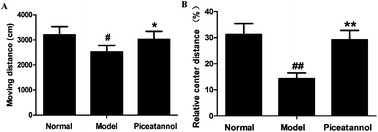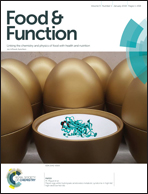Piceatannol attenuates behavioral disorder and neurological deficits in aging mice via activating the Nrf2 pathway
Abstract
Aging is a complex process that is accompanied by neurological damage. Chronic injection of D-galactose (D-gal) can accelerate the aging process similar to natural aging and is commonly used to build an aging model to investigate aging. In the present study, the effects of piceatannol on D-gal-induced aging in mice were evaluated. Piceatannol treatment showed an observable anti-aging effect. Results obtained in vivo showed that piceatannol retained spontaneous motor activity and enhanced spatial learning and memory abilities in mice in which aging was induced by D-gal. Morphometric analysis displayed that piceatannol prevented D-gal-induced neuronal loss, increased the number of Nissl bodies, and promoted cell proliferation in the hippocampus and cortex. Piceatannol also significantly decreased the level of MDA and elevated SOD and CAT activity in the hippocampal and cortical tissues. Furthermore, western blotting results revealed that piceatannol treatment noticeably reversed the suppression of Nrf2 nuclear translocation and increased the expressions of HO-1 and NOQ1 in mice with aging induced by D-gal. Furthermore, piceatannol activated the Nrf2 pathway in natural aging mice, whereas treatment with the Nrf2 inhibitor brusatol reversed the increased expressions of Nrf2, HO-1, and NOQ1. In conclusion, treatment with piceatannol ameliorates behavioral disorder and brain injury in an aging mouse model; this suggests that piceatannol is a promising pharmaceutical candidate for the treatment of age-associated diseases.



 Please wait while we load your content...
Please wait while we load your content...